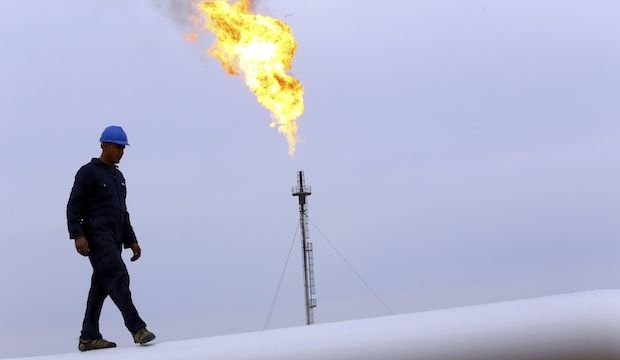The steep decline in oil prices presents new economic realities for countries in the MENA region. Global oil prices have declined by more than half from their peak last summer, to levels not seen since a short period in 2009. The combination of unexpectedly higher oil production from unconventional sources, weak global demand, and the decision of OPEC to maintain their production levels has led to both a sharp price decrease and uncertainty about how long the current trend will last. Where prices will eventually settle is, of course, uncertain, making it hard for policymakers to gauge how much of the shock is temporary in nature and what share of it they should expect to last. What is clear, however, is that lower oil prices present economic challenges for oil exporters in the region, while benefits for oil importers remain contained.
MENA oil exporters are now faced with large export and government revenue losses. In our upcoming Regional Economic Outlook Update, we estimate that in the countries of the Gulf Cooperation Council alone, oil and gas export losses will amount to around 300 billion US dollars this year. And all oil exporters in the region, with the exception of Kuwait, will now have to dip into their accumulated savings or borrow to finance deficits in their government budgets for this year.
Fortunately, most oil exporter governments have the resources to avoid a steep reduction in their spending plans for this year, and it is likely that they will choose to do so, thus limiting the immediate impact on growth and living standards for their populations.
But foreign asset buffers are exhaustible and many MENA oil exporting countries will empty their buffers within a few years if policies remain unchanged and if oil prices stay low. Therefore, the time is right for these countries to re-assess their medium-term spending plans and target a gradual but decisive adjustment to lower oil prices. Reducing capital expenditure in a phased manner will probably be unavoidable given the magnitude of the task, but preference should generally be given to reining in recurrent expenditures and reducing generalized energy subsidies, which remain large in many countries even with the new lower oil prices. In addition, lower oil prices could present incentives to craft new plans, or rekindle longstanding existing ones, to raise non-oil revenue collection.
With a more constrained fiscal outlook over the next few years, growth models of the past decade that were anchored in rising government spending may no longer be sufficient. Instead, the challenge will be to enable the private sector to become a much more self-sufficient engine of growth. This will require reorienting incentives toward export-driven production of goods and services, for instance by reducing barriers to competition and stepping up trade facilitation and export promotion policies. Similarly, in many countries it will be important to enable nationals to participate more in the private sector labor market to avoid pressures on governments to play the role of employer of first and last resort, a role they will find much harder to maintain in a world of lower oil prices.
In contrast to the oil exporting countries, the fall in oil prices provides welcome relief to the region’s oil importers. Their energy import bills are reduced, pressures on government budgets will ease to reflect the lower cost of energy subsidies and, where lower energy costs are passed on to companies and consumers, they lower production costs and raise disposable income.
However, in most oil-importing countries, gains from lower oil prices are being offset by other factors. A deteriorating outlook for demand in the euro area and the GCC, along with the drop of prices for non-oil commodities which some countries export, will erode some of the windfalls from lower oil import bills. Even so, growth prospects for MENAP (the Middle East, North Africa, Afghanistan and Pakistan) oil importers in 2015 are expected to show a significant improvement over 2014 (nearly 4 percent compared with 3 percent last year), and their budget and balance of payment positions will also show some improvement.
Welcome though the relief from lower oil prices is, it is important to recognize that the future course of oil prices remains highly uncertain. Thus, countries would be well-advised to avoid entering into spending commitments that would be hard to reverse if oil prices returned to higher levels or in the face of other adverse developments. The key is to use this period of lower oil prices to step up the reform efforts that would support faster and more inclusive growth and create better jobs for the population.
